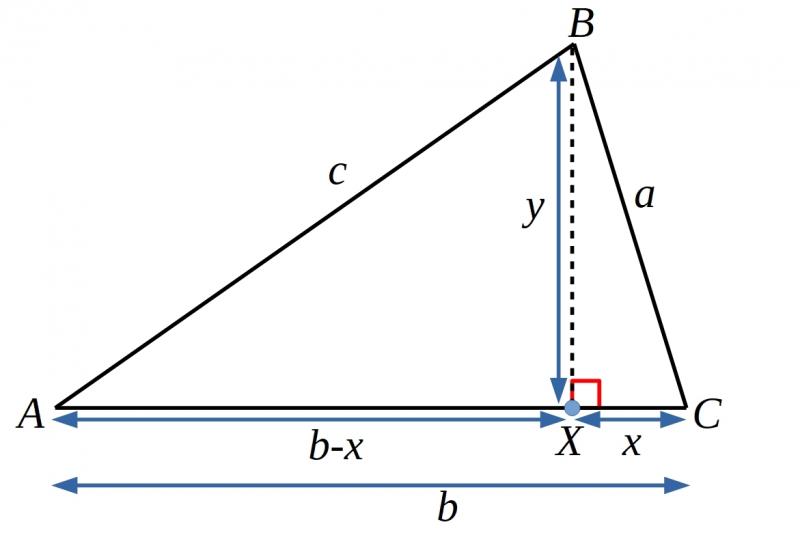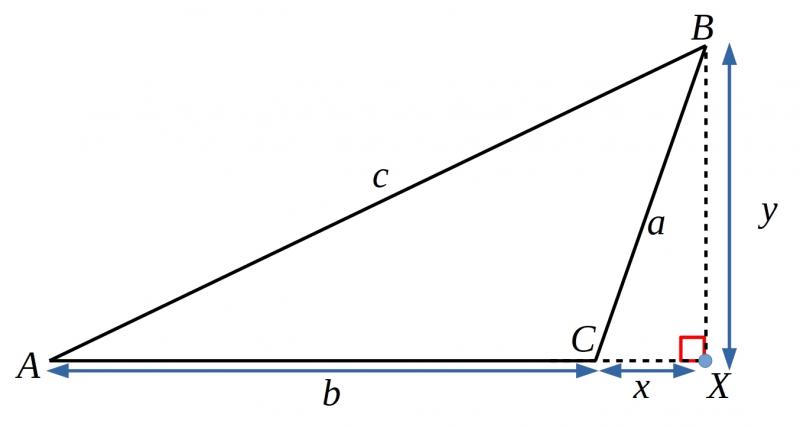The Converse of Pythagoras
Can you prove that triangles are right-angled when $a^2+b^2=c^2$?
Problem
Pythagoras' theorem states that:
"If a triangle with sides $a, b, c$ has a right-angle, and $c$ is the hypotenuse, then $a^2+b^2=c^2$."
You can find some proofs of Pythagoras' theorem here and here. For this problem you can assume that Pythagoras' theorem is true.
The converse of Pythagoras' theorem states that:
"If a triangle has lengths $a, b$ and $c$ which satisfy $a^2+b^2=c^2$ then it is a right-angled triangle."
We can prove this by using a proof by contradiction, which means starting by assuming that the opposite is true and then showing that this leads to an inconsistency or contradiction.
Below is a proof sorter of a proof that if $a^2+b^2=c^2$ then $C$ cannot be less than $90^{\circ}$, and a diagram to accompany the proof. Can you use the diagram and the statements to reconstruct a proof that angle $C$ cannot be less than $90^{\circ}$?

Can you use the diagram below, and the ideas from the proof sorter above, to construct a proof that angle $C$ cannot be more than $90^{\circ}$?

Once both proofs have been completed then we know that $C$ cannot be less than $90^{\circ}$, and that $C$ cannot be more than $90^{\circ}$, therefore $C$ must be equal to $90^{\circ}$ and hence if we have $a^2+b^2=c^2$ then the triangle is right-angled at $C$.
Getting Started
Teachers' Resources
Why do this problem?
This problem leads students through a proof of the converse of Pythagoras' Theorem, i.e. proving that
If $a^2+b^2=c^2$ then the triangle is right-angled.
Students can find the idea of directions of implications tricky, and the converse of Pythagoras can be one of the first occasions when they are asked to consider a converse.
This proof uses Pythagoras' Theorem (usual direction), so it would be helpful if this problem was tackled after looking at some Proofs of Pythagoras.
Possible approach
This problem featured in an NRICH Secondary webinar in March 2022.
These printable cards for sorting may be useful: The Converse of Pythagoras
Ask students to consider the statements $a=2$ and $a^2=4$. Does one of these imply the other? Can students think of another pair of statements where one implies the other, but the reverse is not true?
Iffy logic can be used as an introduction to this idea, or it can be used as inspiration for some pairs of statements to use with the class.
Students can be introduced to the idea of proof by contradiction using this example:
- Assume that there exists a largest integer, $N$
- If $N$ is an integer then $N+1$ is also an integer
- $N+1$ is larger than $N$, so this contradicts the first statement
- Therefore there cannot exist a largest integer
The proof in this problem starts by showing that angle $C$ cannot be less than $90^{\circ}$, with a proof sorter to help students construct this. Students can then use their work on the proof sorter to construct a similar argument to show that angle $C$ cannot be greater than $90^{\circ}$.
Possible Extensions
Students might like to explore the direction of implication further in the problem Iffy Logic (if this has not already been used earlier).
The problem Iff investigates a result about triangular numbers, and asks students to prove both a result and it's converse.
